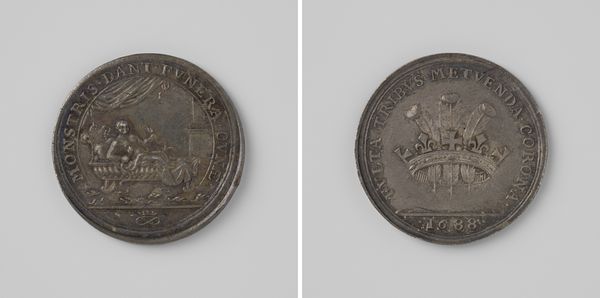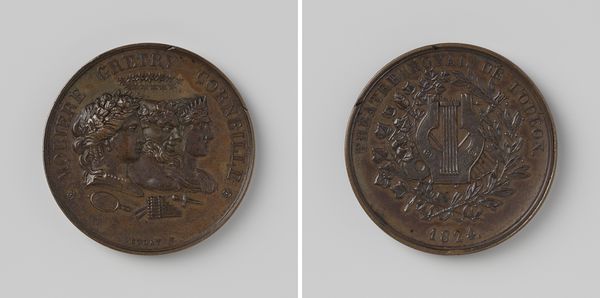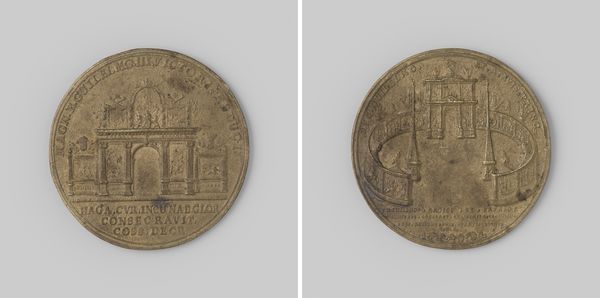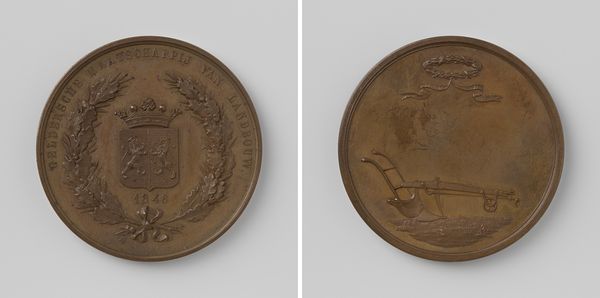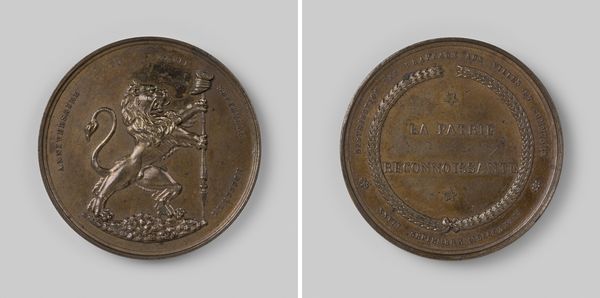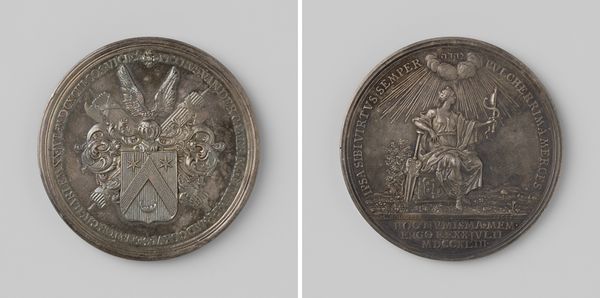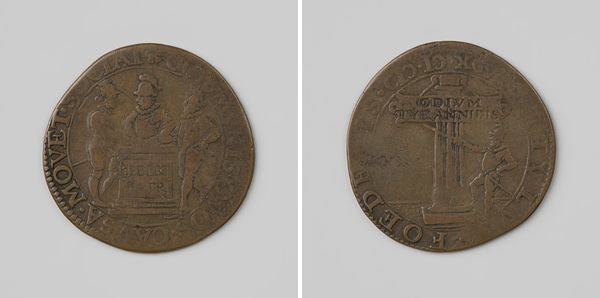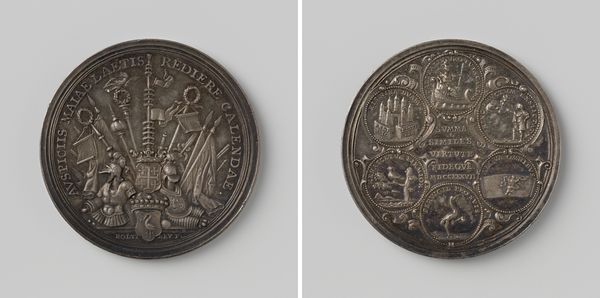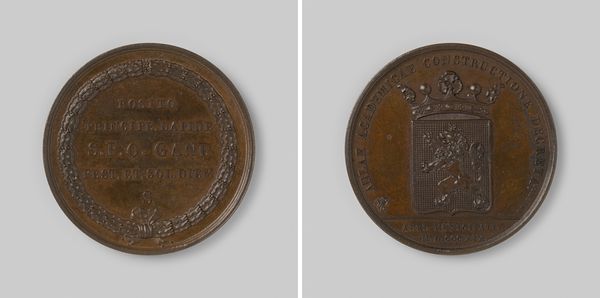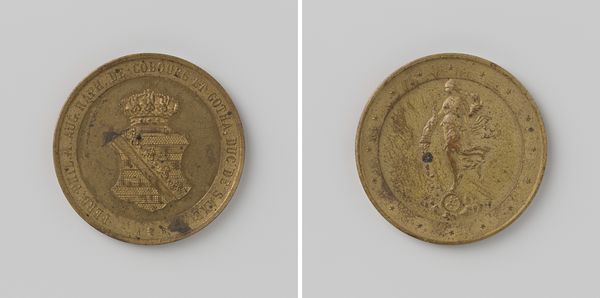
Huwelijk van Leopold I, koning der Belgen en Louise van Orleans te Compiegne 1832
0:00
0:00
laurentjosephhart
Rijksmuseum
metal, relief, sculpture
#
portrait
#
neoclacissism
#
metal
#
sculpture
#
relief
#
sculpture
#
history-painting
Dimensions: diameter 2.7 cm, weight 11.21 gr
Copyright: Rijks Museum: Open Domain
Editor: So this is a metal relief from 1832 by Laurent Joseph Hart, commemorating the marriage of Leopold I and Louise of Orleans. It feels almost... austere, in its symbolism. What stands out to you? Curator: Well, for me, these aren't just designs; they're potent symbols deeply rooted in cultural memory. The handshake, for example, beneath the crown – what does that convey beyond just agreement? It’s about legitimacy, isn’t it? The merging of two powers under divine or at least traditional sanction. Do you see how the torch and wreaths on the other side evoke ideas of enlightenment ideals and established traditions? Editor: That's fascinating. It’s more than just decoration, you're saying it communicates complex layers of power. The torch brings to mind classicism as well? Curator: Precisely! Neoclassicism drew heavily from classical antiquity and its emphasis on reason and order. It spoke of aspiration for a new era built on established principles. It also served to align Leopold I with ideals of justice, progress and civilization, important considerations for a relatively new nation establishing itself. How do you think these symbols would be interpreted by audiences familiar with Neoclassical art and philosophy? Editor: I guess they would read into it aspirations to build a modern, but orderly state based on these enlightenment ideals. It's amazing how much history can be embedded within these symbolic forms. Curator: And think of the metal itself – its durability, its potential to be replicated. This isn't just art for art's sake; it's about crafting a specific narrative, reproducing it, and embedding it in the cultural consciousness. Editor: It really does show how objects carry historical weight far beyond just aesthetics. I see this relief very differently now, I can see it has social and political layers that the artist was intentionally communicating. Curator: Precisely, the iconography transforms what seems a simple historical object into a loaded vessel, continuously resonating with evolving interpretations.
Comments
No comments
Be the first to comment and join the conversation on the ultimate creative platform.
